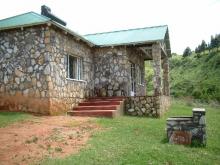Community Based Tourism
Tourists have visited Zimbabwe's rural areas for many years, although the local communities were rarely involved (or benefited from) tourism until a few pilot projects were set up by CAMPFIRE in the early 1990's. Most revenues from tourism in Zimbabwe's communal lands are generated through the leasing of sites for nature tourism, although in some cases local residents run basic tourist facilities and act as guides. Many more tourism plans are in the pipeline, including cultural tourism, bird-watching and access to natural hot springs.

